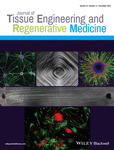Mechanical stretching stimulates growth of the basal layer and rete ridges in the epidermis
Abstract
We have developed four experimental models of mechanical stimulation applied to the back skin using tissue expansion (TE) procedure performed on minipigs. The technique is used by plastic surgeons for decades, to amend the congenital or accidental skin defects, though underlying changes in epidermis are not well understood. We found that the initial stretching increased proliferation of basal keratinocytes leading to elongation of the basal layer, and increased cellular density. The increased number of the rete ridges, suggests that they absorbed the impact of excessive proliferation, preserving layered organization of epidermis. We found β1 integrin to be a very sensitive responder to stimulation instigated by TE procedure, able to dynamically relocate to adjust the basal cell against external force. Repeated mechanical stimulation with a seven-day interval generated healthy tissue without detrimental effects. Given the similarities between the structure of the porcine and human epidermis, we speculate that a similar mechanism functions in human skin. A better understanding of the underlying process could help improve medical care and outcomes for patients undergoing surgical reconstruction.
CONFLICT OF INTEREST
The authors have no conflict of interest to declare.




